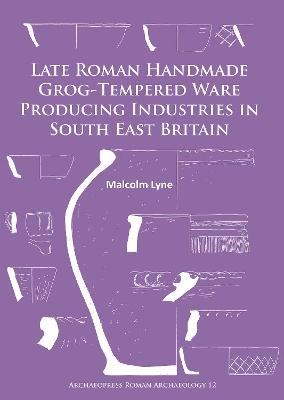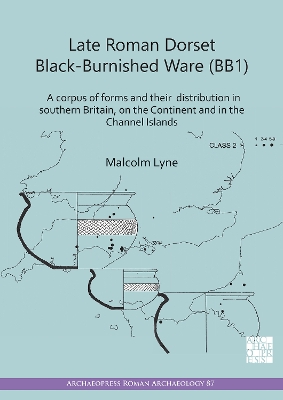Archaeopress Roman Archaeology
2 total works
Late Roman Handmade Grog-Tempered Ware Producing Industries in South East Britain
by Malcolm Lyne
Published 22 January 2016
The appearance and revival of handmade grog-tempered ware producing pottery industries during the late 3rd and 4th centuries using technology more appropriate to the Late Iron Age in the south and south-east of Britain is something of an enigma. This revival in the popularity of such primitive pottery took place on the Isle of Wight and in the Hampshire Basin, East Sussex and Kent at a time when the production of Romanised wheel-turned grey and fine colour-coated wares was still on a large scale in the south of Britain and elsewhere in the British provinces. This publication is the result of 25 years research into these grog-tempered wares: it presents corpora of forms associated with the various industries and discusses the distributions of their products at different periods. It also discusses the possible reasons for the revival of such wares, increasing popularity during the 4th century and disappearance during the 5th century AD.
Much has been written about Roman Dorset Black-Burnished Ware (BB1) and its Late Iron Age Durotrigian origins since the industry was first recognised by Farrar, Gillam and Peacock at the end of the 1960s. However, most of this study has focused on the forms produced and distributed during the 1st to 3rd centuries. Late Roman Dorset Black-Burnished Ware (BB1) covers the late 3rd to early 5th centuries forms produced by the industry, with a corpus and phased distribution of the various products across South-Central and South-Eastern Britain, as well as the Channel Islands, France, Belgium and the Netherlands. The various phases of BB1 production indicate that the distribution zone for the industry reached its maximum extent in Britain during the late 3rd century before a decline set in during the 4th and early 5th centuries. On the Continent, however, there was a considerable increase in supply to Northern French sites and those in Normandy and down the Seine valley in particular. The mechanisms behind late BB1 production, supply and the reasons for its disappearance are also discussed and evidence presented for the industry continuing to function on a much-reduced scale after the Roman abandonment of Britannia until the mid-5th century.

